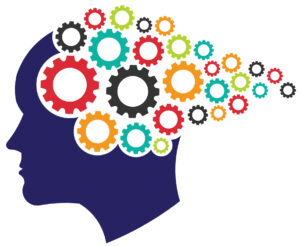
In a continuation of my previous articles on Executive Functioning this article will focus on working memory. My goal of this article is to break down what the phrase “Working Memory” means and also give concrete examples, so that everyone understands why it is important, the role it plays in a life of a women with ADHD and strategies to help you with working memory.
What Is Working Memory?
You may have heard of the term short term memory which is interchangeably used with the term working memory. Both of these terms refer to thoughts or information that you temporarily hold in your memory so that they are there when you want to complete a task. You can think of working memory as a shelf in your brain. For example, imagine that you are going to the grocery store and you need milk, eggs and bread, while you are at the store you remember that you also need cereal. You head to the cereal aisle and focus on the cheerios, the eggs fall off your mental shelf and you end up going home with only cereal, milk, bread and you forget to get eggs.
When Do We Use Working Memory
Women with ADHD use their working memory every day and in many different situations such as reading, writing, planning, organizing ,following a conversation, or if a task has many different steps. The following are some examples on how poor working memory can affect your day life.
-You want to be part of a conversation but by the time the other person stops talking you forget what you were planning to say.
-Consistently losing things like your keys, cell phone or pocketbook
-You get lost easily even when you use your gps
-You have difficulty following in on a conversation because you forget what the other person had said
-You have a lot of unfinished tasks or projects due to you get distracted or forget about it
-You plan to work from home but forget to bring items that you need
-You have to reread a paragraph several times to retain the information.
-You miss deadlines at work because of your disorganization and inability to follow through on projects.
Strategies for Working Memory
There are a number of different products and services that you can use to help you train your brain and improve your working memory. However the following are actually strategies that my coaching clients have used to improve their working memory.
Understand How Working Memory Works and Accept Your Limitations-
The first step to better your working memory to understand it and to accept your limitations. This doesn’t mean you get to say “Oh I forgot and excuse yourself” It means learning to develop and using strategies to compensate for this. Many women with ADHD that I coach use reminder systems to keep things in order, or they use a notepad app on their cell phone or tablet to keep their running to-do list or a list of things that they need to pick up at the store.
Break big chunks into small, bite-sized pieces- Think about if you are getting ready to have a party in your home, and you are very overwhelmed with everything that needs to be done, shopping, cleaning, cooking and setting up for the party. Focus on one area such as the cleaning and break what you need to clean into small bite sized pieces, you can do it room by room or by sections. Ignore the rest until you are done with the cleaning.
Use checklists for tasks with multiple steps- Create a checklist for your first hour at work or before you start a task. This checklist may include the phone calls that you need to make, appointments that you have, emails that you have to answer.
Develop Zones- Create zones for your items (i.e. cell phone, keys) when you return home from either work, or running errands. This zone could be a basket by your door or in the kitchen.
Experiment with various ways of remembering information –One of my clients found it more easy to remember things when she created a song or made up a rhyme. Another one of my clients found that having a visualization helped her remember multiple items. When you are driving home from work or an errand and you cant write it down at the moment, try to visualize yourself stopping at the store picking up the items that you need. Because images are more powerful than words, you are apt to remember everything you need at the store as you follow your visualization..
Exercise Routine- Some ADHD research studies have shown that exercising helps working memory. While the reasons for this aren’t fully understood, scientists believe physical activity improves the health of brain cells. It can also indirectly affect memory by improving mood, helping you sleep better, and reducing stress – areas that can affect cognitive abilities